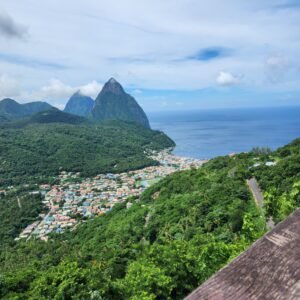Description
Saint Lucia was constantly fought over by the British and the French during the 18th century,
however, there is a dispute over the actual date when the island was first discovered by
Europeans. Some claim that Christopher Columbus sighted the island during his second voyage
in 1493, while others claim that Juan de la Cosa noted it on his maps in 1499, and that the
island is included on a globe in the Vatican made in 1502.
Around 1600, the first European camp was started by the Dutch, at what is now Vieux Fort. In
1605, an English vessel called the Olive Branch was blown off-course on its way to Guyana,
and the 67 colonists started a settlement on Saint Lucia. After five weeks, only 19 survived, due
to disease and conflict with the Caribs (a ferocious tribe who inhabited the Lesser Antilles before
the Europeans’ arrival), so they fled the island.
In 1635, the French officially claimed the island but didn’t settle it. Instead, it was the English
who attempted the next European settlement in 1639, but that too was wiped out by the Caribs.
In 1643, a French expedition sent out from Martinique by Jacques Dyel du Parquet, the
governor of Martinique, established a permanent settlement on the island. De Rousselan was
appointed the island’s governor, took a Carib wife and remained in post until his death in 1654.
Phew!!
Come with us to explore and listen to the captivating historical accounts and learn of her secrets
about a fascinating beauty in the little island home of Saint Lucia!





